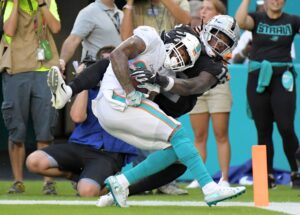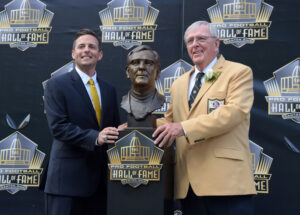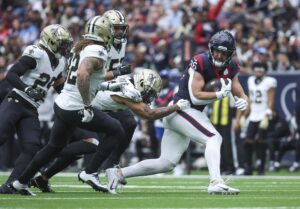As we round out the AFC portion and move into the West division of our series “The Breakdown,” we take a look at the newly relocated Los Angeles Chargers.
The Breakdown: A Look at the Los Angeles Chargers Schematic Philosophy
Remaining the Same
Anthony Lynn is the new head coach in Los Angeles, but offensive coordinator Ken Whisenhunt returns for his second season and will keep his system in tact. It’s a system that features a noticeable of amount of creativity and targets via their tight ends Antonio Gates and Hunter Henry, reliable pass catchers that support the Chargers’ increasing use of 3×1 sets that I will touch on later. The tight end serving as the “1” on the backside, whether it be flexed out or in-line as a 3×1 “closed” look, creates unbalanced sets that force the defense to respond to shift to their ultimate post-snap base coverage based on whether the corner aligns to Gates (zone) or shifts to the trips set (man).
The staples of Whisenhunt’s quick-strike system are underneath crossing routes that allow his personnel to feast on yards after the catch. Thus, a smooth marriage of closed tight end sets is established as these targets can quickly execute such crossers and prove to be reliable targets in their bevy of in-breaking routes off of play-action. It’s also not uncommon for Los Angeles to align a back to these closed formations and send them down the field in two-man route combos with the tight end, often on high-low concepts.
The Chargers’ heavy use of trips (was) poised to suit first round pick Mike Williams before news of the receiver’s injury indicated he will likely miss the entire season. The likes of Travis Benjamin and Tyrell Williams are vertical threats that can stretch the field, while Williams’ size and physicality would’ve provided quarterback Philip Rivers with an intermediate threat who would have ample space to work with and a lethal red zone threat due to his ability to box corners out and go up get it.
Drafting Forrest Lamp and Dan Feeney were wise moves that will contribute to the offenses’s greater good. Lamp was a tackle in college, but has the experience and build of a guard, and should join Feeney as interior upgrades to a run game that features a number of interior runs. Los Angeles lacked the desired athleticism up front and was forced to rely on gap schemes and inside zone runs that kept running back Melvin Gordon from maximizing his potential as a perimeter runner.
A New-Look Defense
Former Seattle Seahawks defensive coordinator Gus Bradley is manning that same post for the Chargers this season, which likely means he’s going to implement his Seahawks-style Cover 3 scheme.
It’s wise to suspect the Chargers operating out of a base 4-3 over front as Bradley employed such a front at a noticeable rate in both Seattle and Jacksonville. Essentially, the 4-3 over puts a team’s nose tackle to the weakside as the three-technique. It plays to the strength of teams who have dominant run defenders as teams with uber-talented three-technique defensive tackles (such as the Rams with Aaron Donald) operate out of a base 4-3 over. Bradley’s mentioned that budding star Joey Bosa could line up as his LEO (essentially a position suited for ‘tweeners who align along the weakside) or as his three-tech, the latter of which will allow him to over power interior blockers with his athleticism and use of his hands.
The LEO position is best suited for the recently extended Melvin Ingram, a one-on-one pass rusher winner who will prove to be a lethal combo when rushing from the same side as Bosa. This LEO rusher will rush the quarterback from different alignments, but don’t be surprised to see the most snaps come from a Wide 9 set. These edge rushers have to be able to win in space and one-on-one scenarios (as previously mentioned), so allowing him to pin his ears back and trim the corner is a seamless call-to-action for Ingram.
Bradley also inherits two standout corners in Casey Hayward and Jason Verrett, both of whom are great man-coverage talents. This is important when considering how creative you want your blitz packages to be and often you want to put it in motion. Former defensive coordinator John Pagano was well-aware of talented corners he had and ran his disguises through his front seven as opposed to his secondary, so look to see how Bradley handles that aspect.






